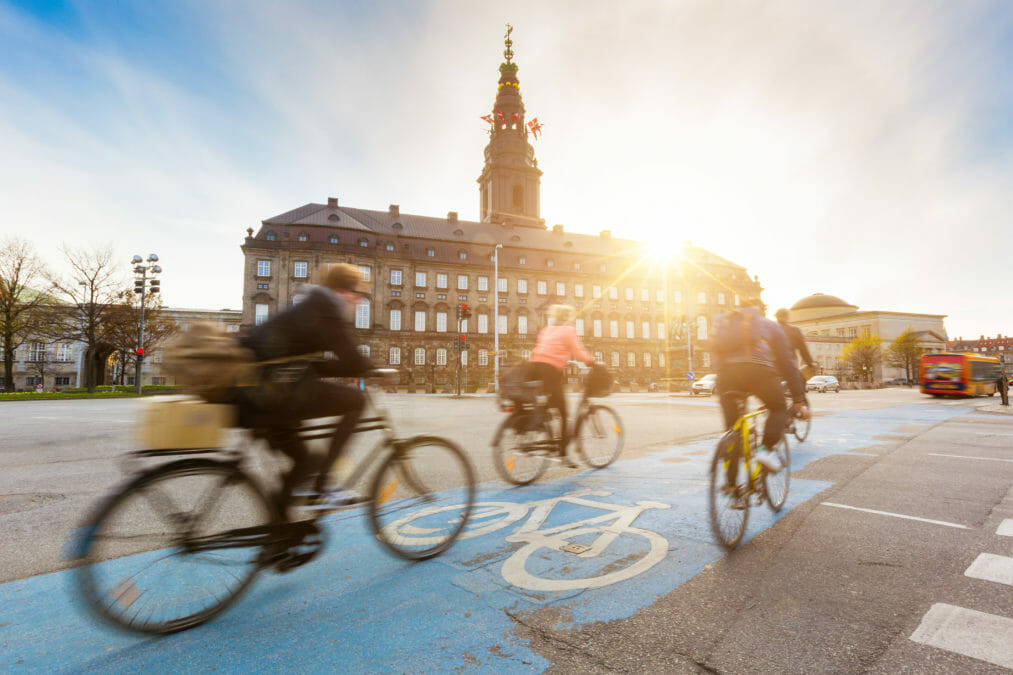Covid-19 is changing the world we live in, and the way we navigate it. How that change manifests, and how it is managed long-term, is now something which is becoming increasingly important to national government, local authorities, and the man or woman on the street.
It’s not surprising that hospitals, for example, are adapting in the face of the pandemic, nor that shops and restaurants are making physical changes in their environments to allow people to get around them in a secure manner. However, as has been pointed out in several quarters, it’s one thing to redesign a building, but another to redesign the way in which people get there.
AI use cases in healthcare for Covid-19 and beyond
Cycle lanes might not spring to mind when you think about how towns and cities will look after a pandemic-induced reconfiguration. Nor would canal tow paths, or road junctions. But the infrastructure in these areas of ‘active travel’, as government now refers to healthier travel methods such as cycling and running, will play a key part in how people stay safe when going from A to B in built up areas.
Freedom of movement
Traffic levels plummeted by nearly 70% in the UK during the depths of lockdown, according to data from our own sensors in some of the nation’s busiest towns and cities. In a world in lockdown, freedom of movement (something so easily taken for granted) has been eagerly seized as restrictions were loosened. And with many of us working from home, time normally spent commuting may now be free to cycle or walk.
This is no bad thing. Walking instead of jumping on the bus is better for our health in general, and not just because of avoiding infection. Cycling instead of catching the tube relieves pressure on public services and also provides our daily exercise. Indeed, the UK government has been enthusiastically positioning ‘Active Travel’ as one of the key changes it wants to see in how we behave. Millions of pounds in funding have been made available by the government to local authorities and councils to put Active Travel measures in place, and a huge amount of planning is being undertaken for new cycle lanes, newly pedestrianised areas of towns, wider pavements, and more.
How IoT is helping cities become more sustainable than ever before
Safety first
The two main issues facing local councils are time and safety. Time, in that national government may have made funding available, but has provided very little time in which councils can put forward proposals of how they will use that money – the crux of any application. Then there’s safety, in that any measures that a council proposes must be safe for pedestrians and cyclists (and indeed other road users), with respect to both general health and safety and the new considerations of Covid-19. It’s easy to think that cycle lanes will get busier, or more people will be out jogging on their local towpath, and existing infrastructure will simply flex to meet demand. Does this hold true when cyclist numbers are at 150% or more of pre-lockdown levels? Or when pedestrians are returning to normal numbers when ‘normal’ was before social distancing was required? This isn’t a risk local authorities can take.
AI drives success
Narrow paths, for example, make it difficult to socially distance. Junctions with advanced stop lines, or ‘bike boxes’, which are safe for 10 cyclists, overflow with 15 or 20. ‘Pinch points’ for either cyclists or pedestrians are now doubly challenging, and it requires a forward-thinking approach from local authorities to maintain safety and security all round.
With local lockdowns being a new threat, councils face fresh calls to gather and understand social distancing requirements. This isn’t just in large towns and cities; local authorities need to be able to assess and understand risk across broader geographical areas to keep people safe. More small towns and villages are already installing cameras and sensors (or upgrading their current infrastructure) to capture data in their streets to identify places where people struggle to social distance. The city of Oxford, too, has implemented a large scale deployment of cycling specific sensors. Councils and other local authorities are taking their responsibilities seriously.
Aiding all this is AI. Artificial intelligence can underpin a council’s strategy for coping with the Active Travel boom. In practical terms, this means positioning cameras at busy junctions, on popular footpaths, and around town and city centres, then analysing what those cameras see. It’s not just a numbers game, although knowing with confidence how many people are travelling in a certain area on a given day will certainly be useful. AI can quickly identify where social distancing is struggling to be adhered to due to road or path layout, and spot dangerous behaviour such as undertaking or cyclists riding on pavements. The virtuous cycle is that as the AI gathers more data about an area, it learns and becomes quicker and more efficient in the future. Councils can act on that data to restructure roads, pedestrianise certain areas, expand cycle lanes, close certain paths or plan future investment.
Can AI help with your quest for global talent?
Local knowledge
Ultimately, it will be this local knowledge which will have the most impact on making the UK’s towns and cities safer in the face of Covid-19 and beyond. Local authorities with their communities’ best interest at heart can enact lasting and positive change, which could also underpin a healthier way of getting around for us all. Technology has its part to play in equipping those leaders to make better decisions at the right time, and will undoubtedly become more integrated with council processes through improved self-service and the like. Working in tandem, artificial intelligence and human nous will help us all make that trip from A to B with more peace of mind.








